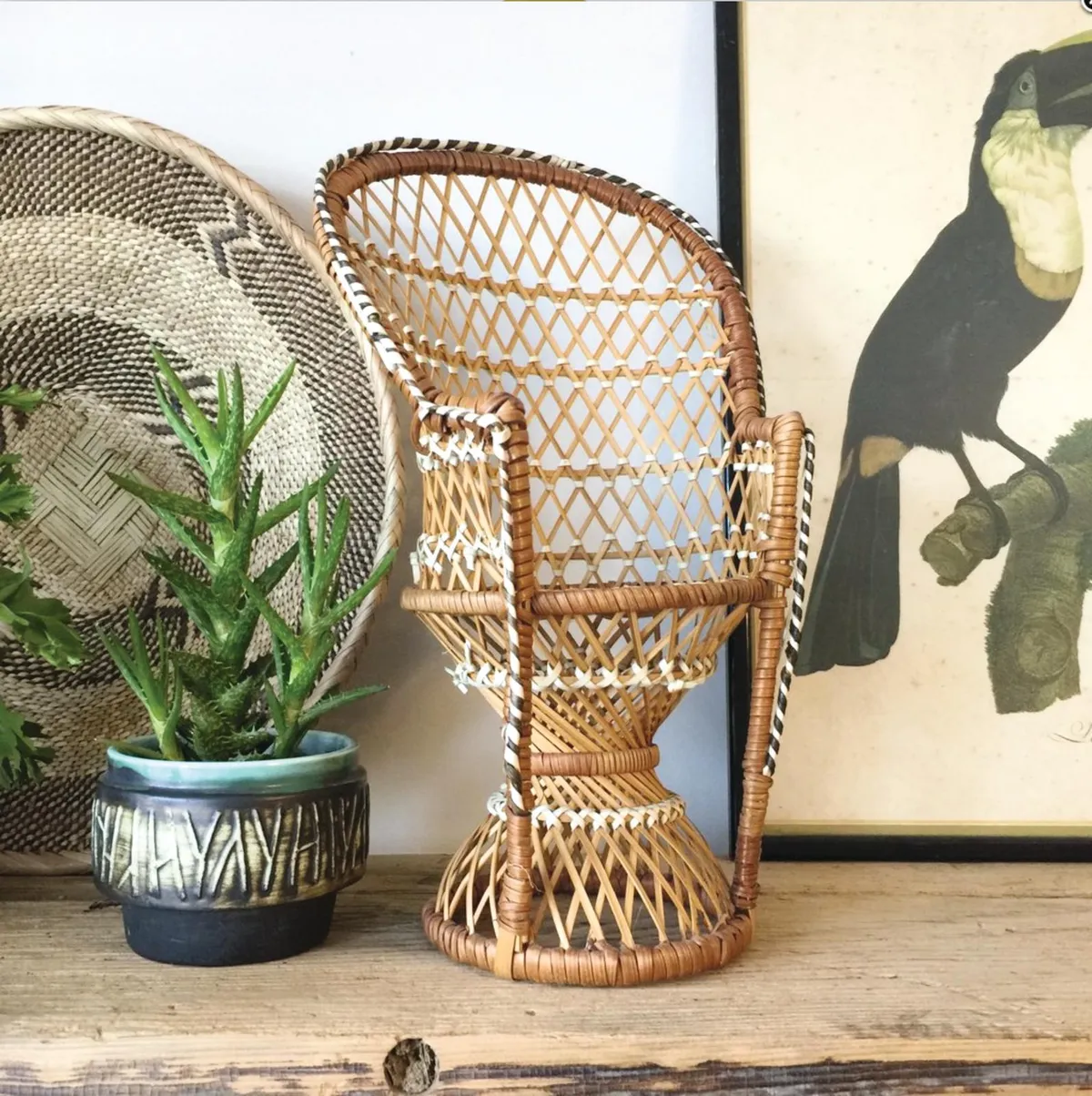Regarded by most as an innovation of the 1970s, the Peacock chair actually owes its existence to the Spanish-American war of 1898. This short conflict ended with Spain ceding the Philippines to America in exchange for $20m. Trade links were swiftly established between the United States and the Philippines, and large consignments of rattan furniture, including Peacock chairs, began to arrive.
Although there was nothing unusual about the Peacock chair's construction (furniture woven from cane-like plants such as rattan, dates all the way back to ancient Egypt), its appearance was completely new: mostly woven on an hour-glass-shaped base, its seat and arms key into a high, flared, fan-like back. This flamboyant, tail-feather-like design, reminiscent of a peacock’s, gave the chair its name – other lesser-used tags include the ‘Manila’ and the ‘Philippine’.

Given its imposing, throne-like appearance, it was assumed that the Peacock chair must have been created for south-east Asian royalty. Its actual origins, however, are shrouded in myth, though there’s evidence to support a theory that it was created by a German prisoner at Bilibid prison, Manila, in the late-1800s.
The Peacock chair’s exotic and regal demeanour rapidly ensured its place on the verandas and conservatories of wealthy households, initially in the United States, followed by Europe. More significantly, it caught the attention of photographers and the burgeoning film industry. Images of stars of stage and screen seated in the Peacock chair appeared throughout the 20th century – iconic shots include Elizabeth Taylor, Diana Ross and Truman Capote.
While portraits such as these ensured the visual prestige of the Peacock chair, others exemplified its role in cultural and political change, most notably its association with the West Coast hippie counter culture, and also with the Black Power movement – the latter a result of a hugely popular poster of the founder of The Black Panther Party, Huey P Newton, seated in a Peacock chair holding a shotgun in one hand and a spear in the other.

The Peacock chair’s popularity in the 1960s and 70s can also be viewed as a reaction against the more streamlined forms of mid-century modern furniture, especially the pieces manufactured in man-made alloys and plastics. Good-quality designs from the turn of the 20th century sell from the low to high hundreds, and chairs from the Sixties and Seventies command similar sums.
The choice for buyers is essentially aesthetic. Personally, I would look for an example with a natural (as opposed to a painted) finish. The rattan on an older example, if it’s been properly looked after, should have gradually acquired a mellow patina that’s particularly easy on the eye.
Want to learn more about the history of art but not sure where to start? We've made a list of the best art history and appreciation courses and lectures available online.